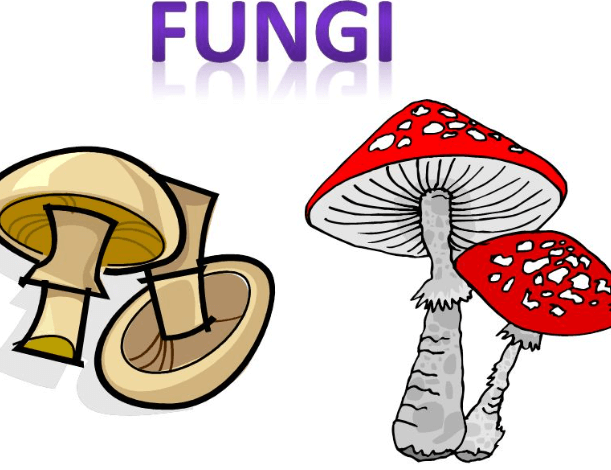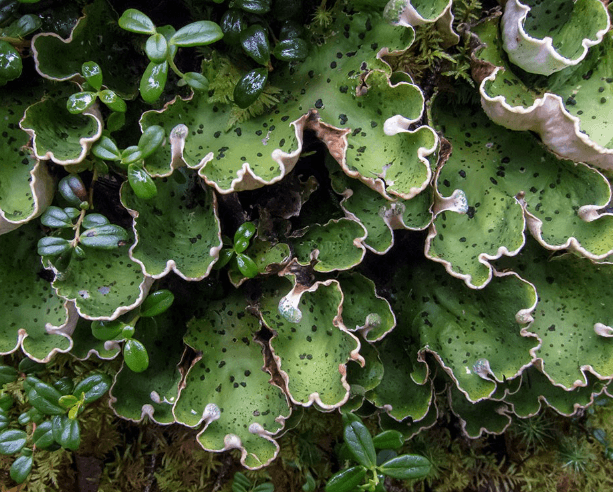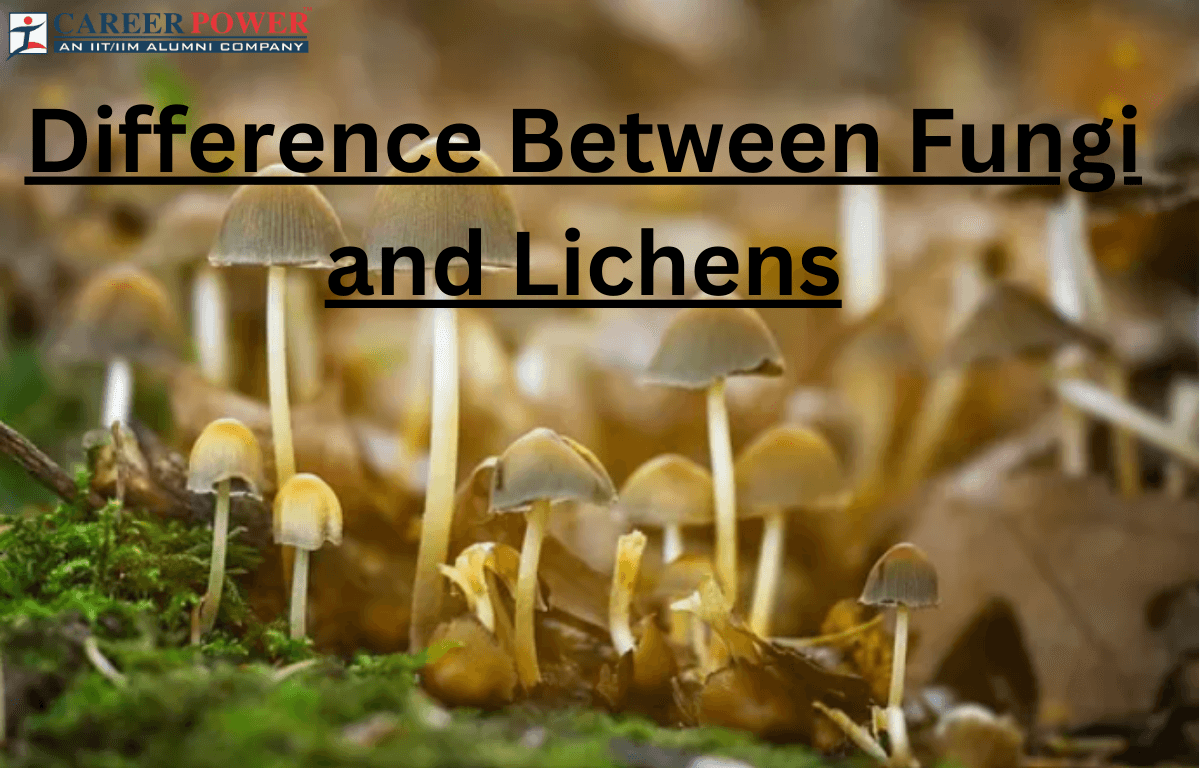Fungi and Lichens
Both fungi and lichens are distinct biological entities. Fungi are organisms belonging to the Kingdom Fungi, while lichens are symbiotic associations between fungi and photosynthetic partners, often algae or cyanobacteria. Fungi are eukaryotic organisms that obtain nutrients through absorption. They can be single-celled (yeasts) or multicellular (molds and mushrooms). In contrast, lichens are composite organisms formed by a fungal partner (mycobiont) and a photosynthetic partner (photobiont). In summary, fungi are a kingdom of organisms, while lichens are specific symbiotic associations involving fungi and photosynthetic partners.
Define Fungi
Fungi are remarkable living organisms that fall into their own kingdom, separate from plants, animals, and bacteria. They come in various shapes and sizes, from tiny molds to towering mushrooms. Unlike plants, fungi don’t make their food through Photosynthesis; instead, they feed by breaking down organic matter. Picture them as nature’s recyclers, turning dead plants and animals into valuable nutrients that enrich the soil. One unique job fungi have is forming partnerships with plants.

In these partnerships, called mycorrhizae, fungi help plants absorb nutrients from the soil, and in return, the plants provide the fungi with sugars. Some fungi are even delicious and safe for us to eat, like mushrooms. Beyond being tasty, fungi contribute to medicine, as some produce antibiotics. They’re also crucial in making things like bread rise, brewing beer, and even cleaning up Pollution by absorbing harmful substances. In essence, fungi play diverse roles in ecosystems, agriculture, and human activities, showcasing their fascinating and important place in the natural world.
Define Lichens
Lichens are extraordinary partnerships between fungi and algae or cyanobacteria, forming a unique duo that works together to survive. Picture them as tiny, living communities found on rocks, trees, and even the ground. The fungal partner provides a protective home, like a cozy shelter, for the algae or cyanobacteria. In return, these photosynthetic companions create food through photosynthesis, sharing it with the fungus. What makes lichens fascinating is their ability to withstand harsh conditions.

They can thrive in places where other organisms struggle, like rocky mountains or tree bark. Their adaptability makes them like nature’s pioneers, colonizing and surviving in environments that might seem inhospitable to others. Lichens come in various shapes and colors, adding splashes of life to seemingly barren landscapes. Beyond their ecological importance, lichens are also indicators of environmental health. Changes in lichen populations can signal shifts in air quantity and pollution levels, making them tiny but powerful guardians of the environment.
Difference Between Fungi and Lichens
Fungi and Lichens are different in how they live. Fungi, like mushrooms, are independent living beings in their own kingdom. On the other hand, lichens are a teamwork between a fungus and algae or cyanobacteria. The fungus gives support and protection, and the algae or cyanobacteria produce food through Photosynthesis. Imagine Fungi as solo artists and Lichens as a band where each member plays a crucial role, working together plays a crucial role, working together to survive. So, fungi go solo, while lichens are nature’s rock band. Other differences are tabulated below.
| Difference Between Fungi and Lichens | ||
| Features | Fungi | Lichens |
| Composition | Single organisms belonging to the Kingdom Fungi. | Symbiotic associations between fungi (mycobiont) and photosynthetic partners (photobiont). |
| Nutrient Acquisition | Fungi absorb nutrients from their surroundings | Lichens have symbiotic associations between fungi (mycobiont) and photosynthetic patterns (photobiont). |
| Structure | Fungi can be single-celled (yeasts) or multicellular (molds, and mushrooms). | Lichens are structurally complex, with a fungal partner providing a protective structure for the photosynthetic partner. |
| Partnership | Fungi exist independently or may form mycorrhizal associations with plant Roots. | Lichens form a mutualistic partnership between fungi and algae or cyanobacteria. |
| Reproduction | Fungi reproduce through spores. | Lichens reproduce both sexually and asexually; fungal spores and algal/cyanobacterial cells may be involved. |
| Habitat | Fungi are found in diverse habitats, from soil to decaying matter. | Lichens often inhabit surfaces like rocks, trees, and soil. |
| Function | Fungi are primarily decomposers, pathogens, or mutualistic partners with plants. | Lichens act as pioneers in colonizing harsh environments, contributing to soil formation. |
| Sensitivity of Pollution | Some fungi are sensitive to pollution. | Lichens are often used as bioindicators due to their sensitivity to environmental changes, including pollution. |
| Metabolism | Fungi are heterotrophic, obtaining organic carbon from other sources. | Lichens are mixotrophic, as they can photosynthesize to produce their own food. |
| Adaptation to Environments | Fungi adapt to various environments, including extremes. | Lichens are found in extreme environments like deserts and Arctic regions, showcasing adaptability. |
Functions of Fungi and Lichens
Fungi play crucial roles in ecosystems as decomposers, breaking down organic matter. They also form symbiotic relationships with plants, aiding in nutrient absorption. Lichens, a partnership of fungi and algae, contribute to soil formation, and some are indicators of environmental health.
Functions of Fungi
Here we have discussed a few points that will highlight the functions of fungi. Understanding and appreciating these ecological roles highlight the importance of fungi in maintaining the balance and health of various ecosystems.
- Decomposition: Fungi are key decomposers, breaking down organic matter and recycling nutrients into the ecosystem.
- Nutrient Cycling: They play a vital role in nutrient cycling by releasing enzymes that break down complex organic molecules into simpler forms.
- Symbiotic Relationships: Many fungi form mutualistic relationships with plants (mycorrhizal) or algae/cyanobacteria (lichens), enhancing nutrient absorption or providing protection.
- Food Sources: Some fungi are directly consumed by animals, contributing to the Food Web.
- Medicine Production: Certain fungi produce antibiotics (e.g., Penicillium) and other bioactive compounds with medicinal properties.
- Fermentation: Fungi are used in food production through Fermentation processes, such as in making bread, beer, and cheese.
- Biological Pest Control: Some fungi act as natural predators of insects. offering a form of biological pest control.
Functions of Lichens
Lichens, which result from a symbiotic association between fungi and algae or cyanobacteria, serve several functions. Understanding these functions underscores the ecological importance of lichens in various ecosystems.
- Soil Formation: Lichens contribute to soil formation by breaking down rocks into soil formation by breaking down rocks into soil particles through their physical and chemical activities.
- Pioneer Species: Lichens are often pioneer species, colonizing harsh environments where other plants struggle to grow, initiating the process of primary succession.
- Nitrogen Fixation: Certain lichens with cyanobacteria can fix atmospheric nitrogen, converting it into a form that plants can use, enhancing soil fertility.
- Bioindicators: Lichens are sensitive to environmental changes, making them useful bioindicators for air quality and Pollution levels. Their presence or absence can indicate the health of an ecosystem.
- Habitat for Microorganisms: The thallus of lichens provides a habitat for various microorganisms, contributing to microbial diversity in ecosystems.
- Food Source: Lichens can be a food source for certain animals, such as reindeer and some insects.



 50 Vegetables Name for Kids in English a...
50 Vegetables Name for Kids in English a...
 Food Chain: Definition, Types, Examples,...
Food Chain: Definition, Types, Examples,...
 Human Respiratory System: Definition, Di...
Human Respiratory System: Definition, Di...













